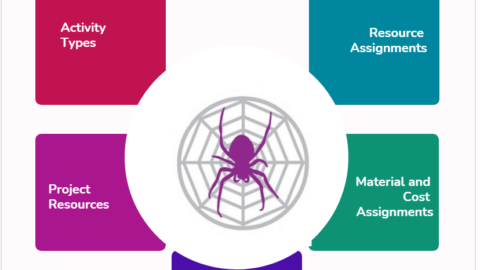Accelerating Development Cycles with Automated Cross Browser Testing
Automation testing plays a vital role in accelerating the development cycle because it streamlines the various testing phases and reduces the overall testing time. Incorporating automation testing into our processes can expedite development and minimize manual efforts. When it comes to automated cross-browser testing, it is essential for validating web applications across multiple browsers, ensuring consistent functionality and user experience. It helps identify and fix compatibility issues early in development, saving time and enhancing product quality. Additionally, it accelerates development cycles by providing quick and reliable feedback on the application’s performance across various browser environments.
Table of Contents
This article will delve deeper into the benefits of automation cross browser testing and its integration with cloud-based platforms in expediting the development cycle. Additionally, we will explore different best practices to achieve optimal results in this regard.
The Need For Accelerating Software Development Life Cycle
Today, the software industry is evolving at a breakneck pace. Thus, updating new features in the software application must be quick. Also, the client expects their needs to be responded to quickly. For these, we need to accelerate the development life cycle of the software applications. But acceleration does not mean compromise with the quality. The quality of the software application should be effective. Therefore, maintaining the quality and performance of the software application along with its fast deployment automation cross-browser testing is pivotal.
What Is Automated Cross-browser Testing?
The execution of the cross-browser testing can determine the quality and performance of the software application. The cross-browser testing ensures the software application’s correct functioning and similar appearance across the combination of browsers and devices, irrespective of its version. But certainly, testing a software application across multiple versions of similar and different browsers requires a lot of time and effort. Thus, the development takes more time. But, we can integrate test automation tools to reduce the overall development time. The combination of test automation tools and test scripts to perform cross-browser testing with little human interference and effort is termed automated cross-browser testing.
To carry out cross-browser testing, we require various devices and multiple browsers and their versions. And to set them up, we need cost, effort, and time. However, we can reduce the usage of excessive resources with the help of a cloud-based environment. Usage of the cloud allows us to skip using actual physical resources. Thus, the time, cost, and effort required to set up the physical device are exempted.
Cloud testing platforms like LambdaTest allow you to perform automated cross-browser testing at scale. Cloud testing platforms like LambdaTest help you automate complex or uncertain scenarios with specifications. LambdaTest is an AI-powered test execution and orchestration platform that empowers developers and testers to perform automation testing seamlessly on over 3000+ real browsers and operating system combinations.
LambdaTest’s automation capabilities go beyond the ordinary, making it an invaluable tool for tackling complex testing scenarios. With its user-friendly interface and advanced features, teams can seamlessly automate tests, ensuring efficient and effective testing across various browsers and operating systems. LambdaTest is a versatile and powerful ally for those looking to optimize their automation testing processes.
Automation Testing Benefits In Accelerating Software Development Life Cycles

Automated cross-browser testing is a boon for testers and developers. It benefits in accelerating the software development life cycle in the following ways.
- Speed: Automated cross-browser testing does not require a lot of human interference and works at its own pace, increasing the development’s overall speed. Automated testing executes the test cases rapidly and thus provides quicker analysis and feedback.
- Efficiency: Automated cross-browser testing allows continuous software application testing through the CI/CD pipeline. This increases the performance and quality of the software application. Also, automated cross-browser testing helps quickly detect bugs that can be fixed instantly.
- Consistency: During the entire development process, automated cross-browser testing executes the same set of test scripts. This ensures no bugs are present in the software application. The consistency in the execution of the test script improves the quality of the software application. This further helps in the early development of the software application.
- Regression testing: Regression testing is part of automated cross-browser testing. The test cases are executed after every update in the software application. This ensures that no new bug has been introduced due to the changes made to the code.
- Cost-saving: The automated cross-browser testing executed on the cloud-based platform reduces the need for actual physical devices. This ensures a reduction in the use of resources, which makes the development of software applications cost-effective.
- Improved Quality: Automated cross-browser testing can easily detect the minute difference in the software application across different applications. This helps easily detect bugs, allowing testers to fix them instantly, thereby improving the quality of the software applications.
Challenges in Accelerating Software Development Cycles with Automated Cross-browser Testing
- There is a variety of browsers available in the industry. Testing software applications across them need time and effort.
- Along with browsers, the software applications must also be tested across multiple devices. Therefore, test automation frameworks need to be addressed efficiently.
- Automated cross-browser testing requires more time in the execution of the test cases. Thereby increasing the overall development time of the software applications.
- Automated cross-browser testing requires more maintenance, thus reducing the efficiency of the software application.
- Parallel execution of test cases in automated cross-browser testing can be complex and critical.
- The test automation tools require high-cost maintenance.
- The test environments required for automated cross-browser compatibility are different from real-world environments. Thus, it may impact the functionality of the software application in a real-world environment.
- The testers and developers need to improve their skills to ensure the effectiveness and efficiency of the software applications.
Best Practices for Accelerating Software Development Cycles with Automated Cross-browser Testing

Automated cross-browser testing can seamlessly accelerate the software development cycle by following the best practices mentioned below.
- Start Early: Software development can be accelerated if testing is started early. A software application’s testing is usually started after the development process. But with the help of an automated testing framework, we can perform testing correspondence to the development. Also, cross-browser testing is time-consuming. Therefore, an early start in development can seamlessly test the software application in the expected time.
- Continuous Integration: To develop and maintain the software application, you must test it with every code change. This will require both time and effort, making the overall development slow. Therefore, it is best to use automated testing integrated into the CI/CD pipeline. This will automatically test the software application across various browsers and browser versions. Thus, the software application’s development cycle will accelerate.
- Test Coverage: To accelerate the development cycle of the software application, you should focus more on the critical features. You may perform automated testing for the critical features of the software application. This will ensure more bugs will be detected. Thus ensuring there is no malfunctioning of the critical features. Also, automated testing helps in increasing the overall test coverage. This means the software applications will be tested thoroughly in less time.
Next Steps
- Maintainable Test Scripts: You must write test case scripts to test the software applications. These scripts should be clear and simple. This is because you need to change the test scripts with the update of software applications or the changes made during the development cycle. Thus, the simple test scripts can easily be updated without effort. This will also remove the necessity to rewrite the test script. Thereby accelerating the software development cycle.
- Parallel Testing: To reduce the overall development time, you can parallelize your testing procedure. This means you can test several features of the software application simultaneously. You may also test your software application across browsers and devices simultaneously. This will accelerate the development of software applications.
- Performance Testing: A software application, when tested in a test automation framework, ensures the speed and responsiveness of the software application is as expected. This means the multiple tasks performed in the software application do not degrade the performance. Also, the load given to the software application is maintained.
- Monitoring: We can integrate monitoring tools into our software applications. This will help in analyzing the test automation. Analyzing is essential as it helps in the early detection of the bugs present. Also, monitoring can help find critical issues before they harm or damage the software applications.
- Reporting: Reporting tools are available to integrate with the software applications. These tools allow their users to create a test report of the test automation. These reports created are simple and easy to understand. The reports are created with the pass or fail status of the test case with a description. Thus, analyzing and fixing the issues takes less time.
Conclusion
Until now, the necessity of quickening the software development cycle has been best known. The speed and consistency of the software application are two factors that can be increased to speed up the software development cycle. Software programs are of higher quality when they do regression testing. The best practices described further accelerate the software application development cycle. Additionally, utilizing a cloud-based platform speeds up and enhances the overall development of the software application.
Since cross-browser testing requires significant time during the testing phase, we have mostly concentrated on its automation in this post. Cross-browser testing guarantees the software application’s functionality and quality. It guarantees a positive user experience. Thus, it needs to be automated so that the software application is bug-free. The testing process is not prone to error.

Irma Gilda is chief executive of Sonic Training and Consultancy Co., the training platform offers project planning and scheduling More than 60 k learners have used the platform to attain professional success. Irma is a professional Primavera P6 Trainer.










